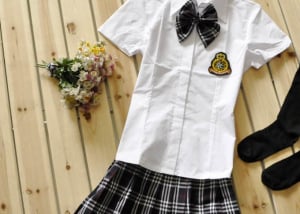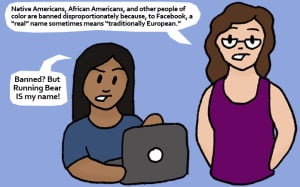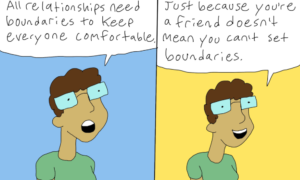
Source: Ali Express
In all my years as a student, I never attended a school with a dress code.
That’s probably a good thing. My outfits of choice in high school — skintight jeans and a crop top, or a micro-mini with fishnets and cowboy boots — probably wouldn’t have passed most of the standard school dress codes trotted out today.
And you know what? Neither my classmates nor I seemed to have suffered academically or socially because I exposed my midriff or showed some leg.
These days, however, my experience seems like an anomaly of the early nineties, before the current dress code frenzy which has schools across the United States measuring the inches between a student’s skirt and her knee.
While students and parents have protested these rules, US courts tend to rule that these codes do not violate students’ civil rights, as long as they are consistent and fair.
But there is pretty good proof that the average dress code is not employed in either of those ways.
And there is also almost no proof that dress codes even have the intended effect.
Yet many people support dress codes on the basis of some pretty erroneous beliefs about what they can accomplish.
Here are four common myths that support those beliefs.
Myth #1: Dress Codes Level the Playing Field
Many dress code enthusiasts believe that dress codes erase visible socioeconomic and cultural differences that can result in unfair treatment by peers and teachers and that without a dress code students are unnecessarily focused on appearance.
As one public charter school dress code handbook explains, “We have adopted a school uniform dress code in order to level the playing field for all of our students. Our school uniform dress code helps to provide for an academic environment where children feel equal.”
As Whitney Gecker points out the book The Poverty and Education Reader, dress codes are often used as a tool to force low income and minority students to conform to mainstream values.
So, far from putting all students on equal footing, dress codes disproportionately affect certain students more than others and the idea that a dress code will prevent students from noticing difference is laughable.
Cell phones, sneakers, and jewelry all help point out those distinctions just fine – not to mention where kids live, what they bring for lunch, the car a parent drops them off in, the spending money they have, and a thousand other markers.
Additionally, many dress codes penalize gender non-conforming students.
For example, a 14-year-old boy in Florida was suspended in 2013 for wearing make-up, and in 2012, an Alabama teen wore a tuxedo for her graduation photo, but since it was in violation of the dress code for girls, her photo was not included in the yearbook.
Dress codes can also punish students for their religious or cultural dress or appearance.
Only a few months ago, a Navajo kindergartener was sent home for having long hair. The rationale? His hair broke dress code rules, which dictated that “hairstyles or designs that are disruptive or distractive to the school environment are prohibited.”
In another case, a Rastafarian teenager in Louisiana was suspended for not cutting his religiously sanctioned dreadlocks, which were also against his school’s dress code rules.
Ultimately, dress codes do not create equality; they suppress it, by trying to erase individuality and the unique backgrounds students bring with them to school every day.
Myth #2: Dress Codes Take the Pressure off Girls to Dress Sexually
Dress codes are supposed to free girls from sexualization.
Indeed, Jean Kilbourne, author of So Sexy So Soon: The New Sexualized Childhood, told the Christian Science Monitor, school dress codes can help to take away some of the pressures that girls feel to don sexy outfits.
As she said in an interview on the matter, “Girls these days are really pressured to dress in a very provocative way. All of their role models — celebrities and pop stars — dress that way. For them, sexy and attractive is defined in a very clichéd and stereotypical way.”
This view assumes teen girls have no autonomy in deciding what they wear. It assumes that they dress for other people. Moreover, it assumes that the sexualization is the fault of the girl, and not the person sexualizing her.
And that’s a pretty insulting notion.
A teen may simply be trying to be fashionable, but an adult may perceive her outfit as sending a sexual message. Or a girl may indeed be trying to look sexy, but the adult is almost certainly not her intended audience.
Either way, any confidence and pride she might take in her appearance is automatically stripped from her when she is told that she is dressing inappropriately.
When adult teachers insert themselves into the role of interpreting a teen’s clothing, it is they who are overtly sexualizing children. And when it’s a male teacher calling out a female student, the dynamic gets even more twisted.
Another common argument for monitoring girls’ clothes is that boys can’t focus on school when they encounter exposed female skin or see curves.
Not only is this view utterly heterosexist, but it also reduces boys to slathering sex fiends with no self control and then tells girls they are responsible for those boys’ behavior — which is disparaging to all parties.
Plus, it has been noted by plenty of folks that dress codes are less about banning particular clothes than they are about banning girls bodies, particularly those which are bigger or curvier.
And while a lot of this discomfort with female bodies comes from expected places, some of it doesn’t.
Last year, Leah, a ninth grade student of mine shared a story about how a teacher at her previous school, a feminist who she deeply respected, pointed out her low-cut shirt in front of an entire class and suggested she cover up.
She explained, “The school had a dress code, but there was nothing in it about cleavage. I know that the slut shame-ish aspect was said by accident, but it was powerful because it had been ingrained even in a feminist teacher to make such comments.”
Leah’s experience reminds us that even otherwise progressive people sometimes (perhaps subconsciously) buy into the myth that girls bodies are inherently problematic and that to protect themselves, girls need to hide those bodies from public view.
Not surprisingly, constantly hearing this message from adults impacts the way girls see their own bodies and can result in complicated feelings about the way they and their peers dress in general.
A paper on girls’ views about high school dress codes published in the journal Youth and Society highlighted this issued. It found that while girls tended to dislike dress codes, dress codes also gave them an excuse to judge other girls’ outfits and that those who were judged most harshly were often working class girls.
As the author writes, “[Dress codes] normalize certain forms of girlhood, problematize others, and suggest girls’ responsibility for the school’s moral climate.”
That’s a hugely unfair burden to put on 50% of the population and one with negative consequences that can last long beyond the time a school can dictate what its students can wear.
Really, claiming that dress codes prevent “sexualization” of girls seems more like a paternalistic excuse given by people who are uncomfortable admitting that some teens girls may choose to express their sexuality through their appearance, or by others who themselves draw sexual conclusions about teens in certain outfits.
Myth #3: Dress Codes Mean Fewer Discipline Problems
The logic behind this commonly held view is that without the distractions of clothing, discipline problems will decrease. But the opposite is actually true.
That’s because once a rule is in place, it has to be enforced. It follows then that the stricter the dress code, the more effort is required to maintain it.
The result is that instead of having fewer discipline problems, schools with dress codes automatically have more.
As a National Education Policy Center report explains, “Dress code referrals are especially time-consuming because they often involve students changing clothes or waiting for parents to bring them new clothes. It can sometimes take more than two hours for a parent to leave work, stop by their house, grab clothes, and bring them to school. This is valuable class time that is lost for the student.”
And this only applies if dress code violator is allowed to remain in school. A shocking number of students are actually sent home or suspended for breaking dress code, which means even more time out of class.
To make matters worse, dress code enforcement and disciplinary action is not something that is doled out equally.
A paper published by the Kirwan Institute for the Study of Race and Ethnicity at Ohio State University explains just how unjust dress code enforcement can be.
“Research suggests that when given an opportunity to choose among several disciplinary options for a relatively minor offense, teachers and school administrators often choose more severe punishment for Black students than for White students for the same offense.
For example, in the 2008-2009 academic year, Black students in North Carolina public schools were suspended at rates significantly higher than White students: eight times higher for cell phone use, six times higher for dress code violation, two times higher for disruptive behavior, and ten times higher for displays of affection.”
Additionally, the types of clothes that are banned — often those assumed to be worn gang members, but really just clothing worn by teenagers – can also tend to lean more heavily towards those favored by Black and Latinx students, which automatically makes those kids more likely to get in trouble.
Even bans on things like hats or headscarves can disproportionately affect minority students. Muslim girls who have to fight for the right to wear headscarves are one example
So are some other kids.
I used to teach at an afterschool program in the Bronx. Almost all of the participants were Black and Latinx. At one point, the program banned hats and head scarves until two of my Black colleagues adamantly argued that doing so would punish Black girls who couldn’t afford to get their hair done regularly. Ultimately, their passion won out and the ban wasn’t enforced. But in plenty of places, passion doesn’t have that effect.
What is more common is that dress codes pass on the basis of arguments like those about the decrease in discipline problems, without taking into account the added discipline that is now required to maintain them, and the unfair enforcement that often follows.
Myth #4: Dress Codes Make Teachers’ Jobs Easier
Another argument for school dress codes is that they make teachers’ jobs easier because students will be more focused on their school work and less likely to be distracted, rowdy, or rude. Additionally, supporters claim dress codes make it easier to identify interlopers who are not supposed to be on school grounds.
Although some teachers advocate for dress codes, saying they help maintain a respectful atmosphere, an awful lot of hate the additional policing that dress codes require of them.
I don’t work in a school with a dress code, but I’ve had a few situations where colleagues have asked me, as the health teacher, to talk to a girl about her clothes and the “message” her outfit was sending.
Luckily, that wasn’t something I was required to do — the idea of saying to Girl X “Hey kid, that shirt is revealing too much boob” or “I can imagine what your butt looks like through your leggings, so you better change” seemed inappropriate for me and humiliating for both of us.
I’m not the only teacher uncomfortable with this, of course. As Dana Goodman, a New York City eighth grade public school teacher says:
“My school’s dress code is definitely applied more to girls because it’s things like no short shorts, tummy showing, bra straps, etc. I’ve never felt comfortable enforcing or commenting on what girls look like at all.
I called out a teacher friend for saying something truly abhorrent and sexist once, about how it’s distracting for the boys. I have often engaged in debate about it because even some female teacher friends at my school think it’s terrible for girls to dress like that.”
When did policing girls’ bodies become a teacher’s job? I thought our job was, you know, to teach.
Whether it be because they have bought into the dress code rationale or because they face consequences from their administration if they don’t, many teachers feel that they must assert themselves on this issue.
So no, it does not make our jobs easier. What it does is turn teachers in to police and students into suspects with even less power than is already inherently built into most school hierarchies.
What You Can Do
Across the country, there has been some powerful student action challenging dress codes. We’ve seen walkouts, social media and “real life” protests and petitions created by pre-teen and teen activists who are taking on this issue.
But adults also want to know how they can fight unfair dress codes in their communities. Here are a few ideas.
1. Know the Facts
If you’re a teacher or a parent, ask to read your school’s dress code policy. You may find some parts are outdated and could use an update. That can be a good angle to take that won’t make it seem like you are attacking the school.
Know that courts have tended to uphold dress codes when challenged, but that dress codes are supposed to be applied fairly. So for example, a school can’t allow an anti-abortion t-shirt while banning a Planned Parenthood one.
Familiarize yourself with research on the effectiveness of dress codes on things like reducing discipline problems or increasing grades — it’s inconclusive at best, and dress codes have been demonstrated to cause real harm.
Arming yourself with knowledge to back your point will come in handy for the next step…
2. Bring It Up with School Administrators
Raise the issue with the principal. Discuss with them what you’ve learned.
If this is a district-wide issue, consider attending a school board meeting. This can help bring it to the attention of people who can actually make changes.
***
Dress code justifications are pretty consistent and often include the language stating that “students are not allowed to dress in a manner that is inappropriate or distracting to others.”
But the last time I checked, nothing is as inappropriate as preventing a teen from learning by enforcing a needless suspension.
And nothing is more distracting being singled out for your appearance.
[do_widget id=”text-101″]
Ellen Kate is a Contributing Writer at Everyday Feminism. Originally from Canada, she is a health educator (and mom) based in New York City, where she teaches high school and college classes, and runs About.com’s LGBT Teens website. Find more of her writing here and follow her on Twitter @ellenkatef.
Search our 3000+ articles!
Read our articles about:
Our online racial justice training
Used by hundreds of universities, non-profits, and businesses.
Click to learn more




















